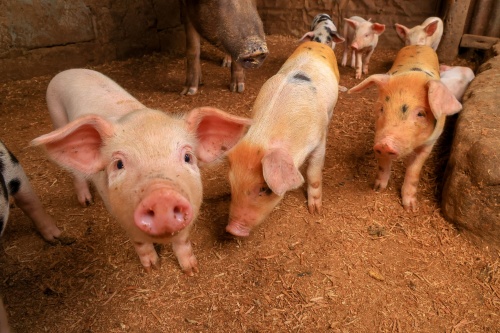How long after mating can a sow be detected using an ultrasound machine? What are the steps for this test?
The optimal time to use ultrasound to detect pregnancy in sows is generally 22-30 days after mating, when the accuracy rate reaches 90%-100%.
Detection Time Window
portable ultrasound machine for swine
18-21 Zile: The gestational sac can be imaged, but the amniotic fluid volume is low, the image resolution is low, and the risk of misdiagnosis is high.
22-30 Zile: The amniotic fluid is full, forming a distinct “black hole” image, and the gestational sac diameter exceeds 2 cm. This is when the detection accuracy is highest (99.9%).
After 35 Zile: Fetal bone calcification reduces the amniotic fluid volume, making detection more difficult.

Key Points
1. Positioning: Probe in the “hairless triangle” of the lower abdomen (5 cm above the midpoint of the line connecting the second-to-last and third-to-last nipples).
2. Technique: Slowly slide the probe at a 45-degree angle toward the spine. Use a high-quality coupling gel to enhance image brightness.
3. Equipment Selection: High-frequency probes (de exemplu 3.5 MHz) allow for earlier detection (fetal structures can be seen after 24 Zile).
A two-stage probing method is recommended: the first stage is between 22 și 25 days to screen for pregnancy failure, and the second stage is around 30 days to confirm pregnancy status.
Detailed Procedures for Sow Ultrasound Examination
I. Pre-Test Preparation
Equipment Setup
1. Check that the main unit and probe are securely connected to avoid poor contact and image blur.
2. Adjust contrast, brightness, and gain parameters: lower brightness in dim lighting and increase gain for thicker skin.
3. Use a 3.5MHz high-frequency probe (suitable for early pregnancy testing) or a 5.0MHz probe.
4. Ensure the device is fully charged (a full charge provides over two hours of continuous operation).
Supplementary Materials
1. Prepare sufficient high-quality coupling agent (to eliminate air interference and enhance image brightness).
2. Prepare 75% alcohol or a specialized cleaning agent (for probe disinfection).
3. Shaving tools (if the sow’s abdomen is thickly haired, partial shaving may be required).
II. Procedure
1. Secure the sow
The optimal position is standing. A baffle can be used to restrain the sow in a corner to reduce stress. In a stall, the triangle between the first to fourth pairs of teats can be examined.
2. Detection and Positioning
Core Area: Lower Abdomen “Hairless Triangle” (5 cm above the midpoint of the line connecting the second-to-last and third-to-last nipples)
Alternative Area: 10-15 cm in front of the hind legs (from the base of the hind legs)
3. Scanning Technique
Tilt the probe 45° toward the spine. Slowly slide in a fan-shaped pattern (approximately 5-10 seconds per pig). Rotate in 45° arcs for multi-angle scanning. Apply coupling gel evenly and maintain close contact between the probe and the skin.
4. Image Interpretation
22-30 Days: Multiple black, circular, anechoic areas will be visible (gestational sac diameter 1-2 cm).
After 30 Days: White embryonic spots and fetal body reflexes will be visible.
Distinguishing Features: The bladder appears as a single, large, black hole, located closer to the abdominal midline.
III. Precautions
1. Testing Timing
Optimal Window: 24-35 days after mating (accuracy >90%)
Avoid testing after 35 Zile (fetal bone calcification increases the risk of false positives)
2. Operating Procedures
Use a two-stage testing method: Initial screening for empty gestation at 22-25 Zile, and pregnancy confirmation at 30 Zile. Record the sow’s ear number, number of gestational sacs, and developmental status. Promptly wipe the probe with alcohol after testing to prevent cross-contamination.
3. Troubleshooting Common Problems
Blurred image: Check for sufficient coupling fluid and readjust the probe angle. Possible false positives: Unilateral uterine horn dislocation requires adjustment of the probe position.
Device Maintenance: Disconnect the battery during long-term storage.
IV. Comparison of Image Features at Different Gestational Stages
20-23 Zile: Small, dark, circular dark areas, easily confused with uterine fluid accumulation, requiring comparison at multiple locations.
24-30 Zile: Multiple adjacent gestational sacs, with the uterine area above the bright line, and fetal inversion visible.
After 35 Zile: Fetal bones are hyperechoic, the spine appears as a continuous white bright line, and the amniotic fluid area is relatively stable.